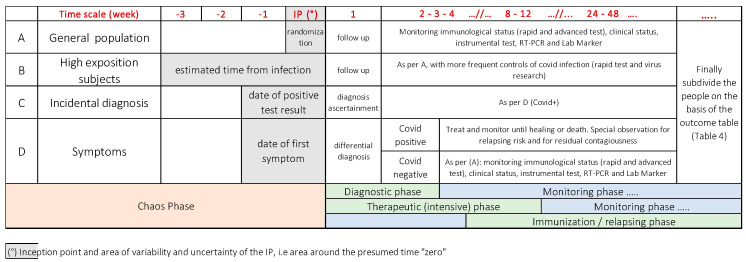Figure 3.
The timeline representing the different phases of the diseases. The interpretation of the results of the rapid tests depends on where the patients are in the timeline. The different groups are classified according to anamnestic criteria. The inception point varies fittingly. Each group represents different settings, where the rapid test can be used for different purposes: (A) Screening of a whole population for epidemiological reasons; (B) screening of a high-risk population; (C) screening in close contacts for diagnosis, follow-up and case tracking; (D) diagnosis and follow-up in symptomatic patients. In all case scenarios, the rapid test can provide information related to the possible acquired immunity to coronavirus. Finally, people and patients in each group should be divided according to the different outcomes shown in Table 4.

